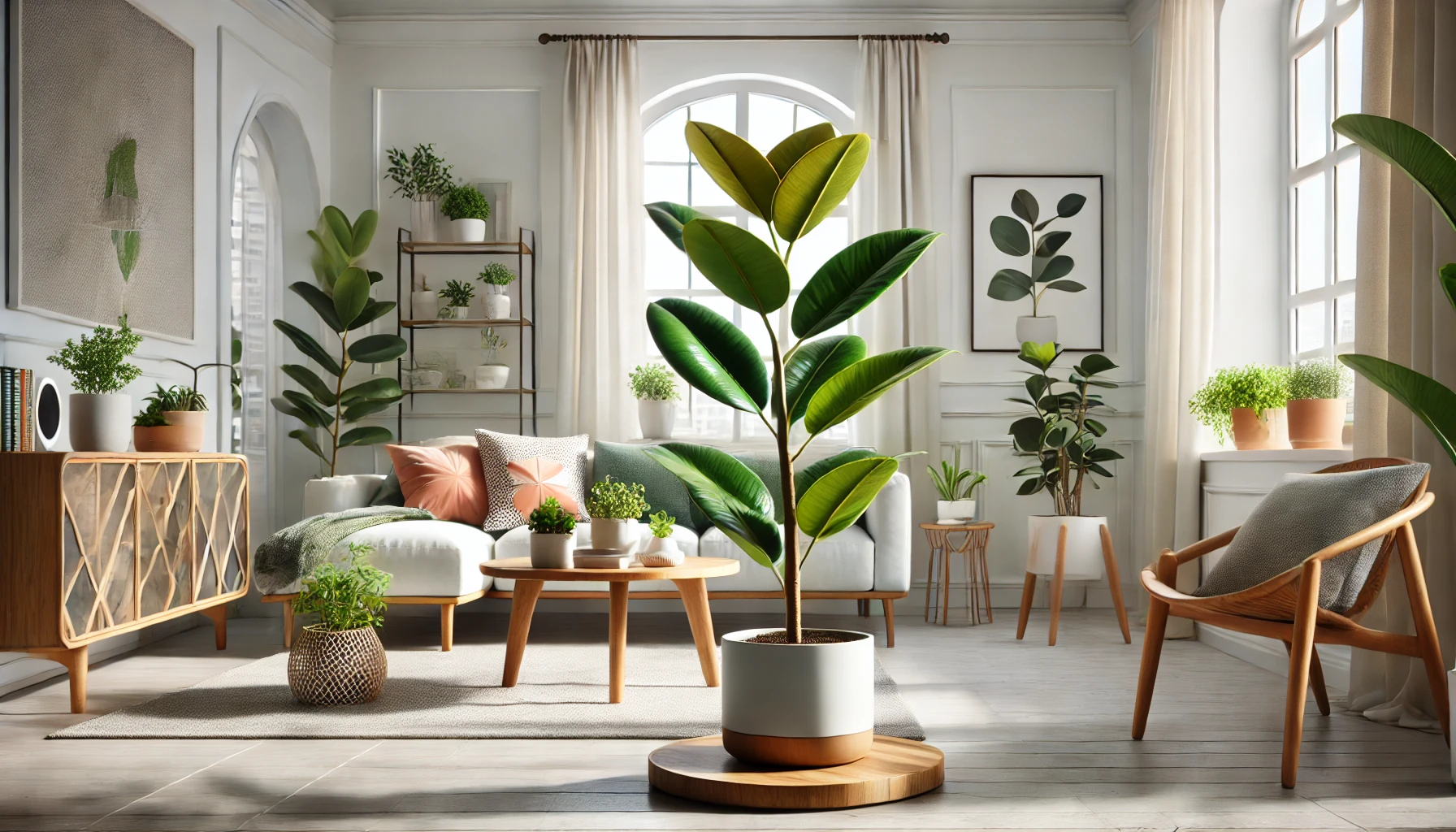
The Baby Rubber Plant, formally known as Peperomia obtusifolia, is a delightful and resilient houseplant admired for its thick, glossy leaves. This compact plant can grow up to 10-12 inches tall, making it an excellent choice for tabletops, shelves, and small indoor spaces.
History and Ideal Growing Conditions
The Baby Rubber Plant is native to the tropical regions of Central and South America, where it thrives in warm, humid environments. It belongs to the Peperomia family, known for its diverse and attractive foliage. The plant’s ease of care and adaptability have made it a popular choice among indoor gardeners.
To replicate its ideal growing conditions, keep the plant in a warm environment with temperatures between 65-80°F (18-27°C). While the Baby Rubber Plant can tolerate lower light conditions, bright, indirect light will promote optimal growth and keep its leaves vibrant. High humidity is beneficial, but the plant can adapt to average household humidity levels.
Toxicity and Pets
Good news for pet owners: the Baby Rubber Plant is non-toxic to cats, dogs, and other pets. This makes it a safe addition to households with curious pets, allowing you to enjoy its beauty without worrying about potential harm to your furry friends.
Best Practices for Caring for Your Baby Rubber Plant
Caring for a Baby Rubber Plant involves understanding its specific needs to keep it healthy and thriving. Proper watering, humidity, soil, light, and temperature are essential components of its care.
Watering and Humidity
Watering your Baby Rubber Plant correctly is crucial. Allow the top inch of soil to dry out between waterings, and then water thoroughly. Overwatering can lead to root rot, while underwatering can cause the leaves to wilt and drop. While high humidity is beneficial, the plant can also adapt to average household humidity levels. Misting the plant occasionally can help maintain its moisture needs.
Soil, Light, and Temperature
The Baby Rubber Plant thrives in a well-draining potting mix. A combination of peat moss, perlite, and regular potting soil works well. Place the plant in a spot with bright, indirect light. An east or north-facing window is ideal, providing sufficient light without the risk of direct sun damage. Keep the temperature consistent, avoiding drafts and sudden temperature changes that can stress the plant.
Common Problems and Remedies
Even with the best care, the Baby Rubber Plant can face some common issues. Yellowing leaves may indicate overwatering, so check the soil moisture and adjust your watering routine accordingly. If the leaves become soft or mushy, it’s a sign of root rot, which can be remedied by reducing watering frequency and ensuring proper drainage. Pests like spider mites and mealybugs can occasionally infest the plant. Regular inspection and treatment with insecticidal soap or neem oil can help keep pests at bay.
Propagation and Benefits
Propagating the Baby Rubber Plant is relatively easy and can be done through stem cuttings. Take a healthy cutting with a few leaves attached and place it in water or moist potting soil. Within a few weeks, roots will develop, and the cutting can be potted up to grow into a new plant. This method allows you to expand your collection or share the plant with friends.
Besides its attractive foliage, the Baby Rubber Plant also helps improve indoor air quality by removing toxins from the air. Its compact size and low maintenance make it a versatile decorative plant, perfect for brightening up small spaces.
Final Thoughts
The Baby Rubber Plant is a charming and resilient addition to any indoor garden. With its thick, glossy leaves and easy care requirements, it brings a touch of the tropics into your home. By understanding and providing the right care, you can enjoy the beauty and benefits of this delightful plant for many years. Whether you’re an experienced plant enthusiast or just starting your indoor gardening journey, the Baby Rubber Plant is a wonderful choice for any plant lover.



